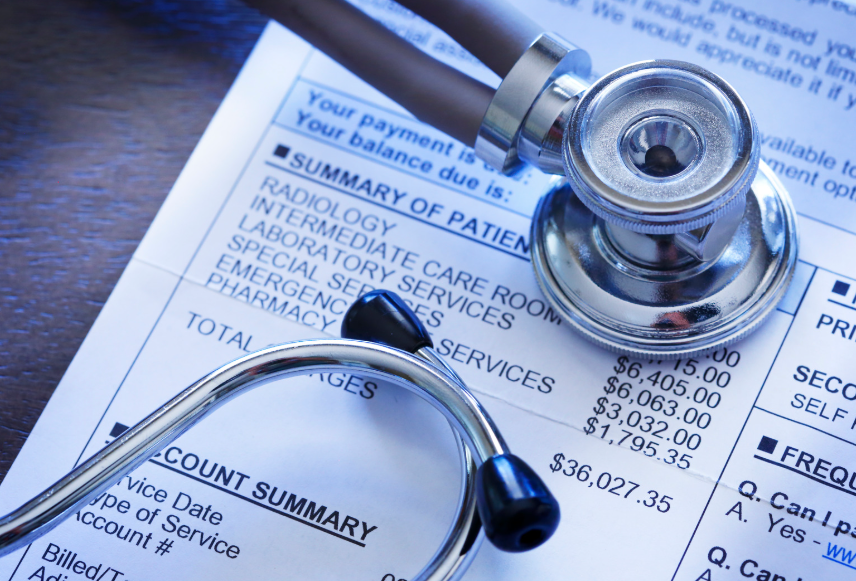“`html
Rising Medical Debt in Los Angeles County: A Comprehensive Analysis
On January 3, a report released by the Los Angeles County Department of Public Health shed light on a concerning trend: the total burden of medical debt in the county has now surpassed $2.9 billion. This marks an increase of $300 million compared to the previous year, emphasizing the significant financial challenges residents face when accessing healthcare services. The report highlights that low-income families and communities of color are particularly vulnerable to the mounting pressures of medical debt, amplifying existing disparities in health outcomes.
The survey findings reveal a grim reality for many Angelenos, indicating that medical debt has emerged as a substantial barrier to achieving financial stability. Over 25% of households surveyed reported delaying or completely forgoing necessary medical care due to worries over costs. This avoidance of essential services can lead to untreated chronic conditions, ultimately resulting in an increased reliance on emergency services. Such trends place additional strain on an already burdened healthcare system, prompting urgent calls for policy interventions to address this critical issue.
Experts in the field are sounding the alarm about the unsustainability of current trends surrounding medical debt. They emphasize the need for comprehensive policy changes to alleviate the financial burdens faced by residents. Advocacy groups are particularly vocal in their demands for expanded healthcare subsidies and the implementation of programs designed to mitigate the effects of medical debt on families. Among the proposed solutions are strengthening Medi-Cal coverage, capping hospital charges, and increasing transparency in medical billing practices.
The report has reignited public discourse surrounding systemic healthcare reform, with community leaders and healthcare professionals advocating for urgent action from both state and federal governments. They argue that addressing the root causes of medical debt is essential for ensuring equitable access to affordable care. The financial hardships borne by affected residents underscore the immediate need for comprehensive legislative changes that can provide relief and stability in the realm of healthcare financing.
Los Angeles County officials are actively exploring potential initiatives to assist residents grappling with excessive medical expenses. Negotiating debt relief options is one of the strategies under consideration, as officials seek to provide tangible support to those impacted by the rising tide of medical debt. These discussions reflect a broader recognition that without targeted interventions, the cycle of debt will continue to escalate, further diminishing residents’ access to vital health services.
As the conversation about medical debt continues to evolve, there is a growing consensus on the need for collaborative efforts among healthcare providers, policymakers, and community organizations. Creating a united front to tackle this issue may lead to more effective solutions that not only address the symptoms of medical debt but also root out its causes. The stakes are high, as the health and financial stability of countless residents hang in the balance.
Conclusion
The alarming rise in medical debt within Los Angeles County is a multifaceted issue that demands immediate attention from policymakers, healthcare professionals, and advocacy groups. With a significant portion of the population delaying or forgoing necessary medical treatment, the implications for public health and healthcare systems are dire. Urgent reforms are essential to ensure that all residents have access to affordable healthcare and can live free from the burden of crippling medical debt. The future of healthcare equity hinges on decisive, meaningful action to address these pressing challenges.
FAQs
What is the current amount of medical debt in Los Angeles County?
The total medical debt burden in Los Angeles County has surpassed $2.9 billion, marking an increase of $300 million from the previous year.
How does medical debt affect residents in Los Angeles?
Many residents report delaying or forgoing necessary medical care due to cost concerns, leading to untreated health conditions and increased reliance on emergency services.
What solutions are being proposed to address medical debt?
Proposals include expanding healthcare subsidies, strengthening Medi-Cal coverage, capping hospital charges, and increasing transparency in medical billing.
Who is most affected by medical debt in Los Angeles?
Low-income families and communities of color are disproportionately affected by medical debt, highlighting existing disparities in access to healthcare.
What actions are government officials considering to alleviate medical debt?
Los Angeles County officials are exploring initiatives that may include negotiating debt relief for residents burdened by excessive medical expenses.
“`

